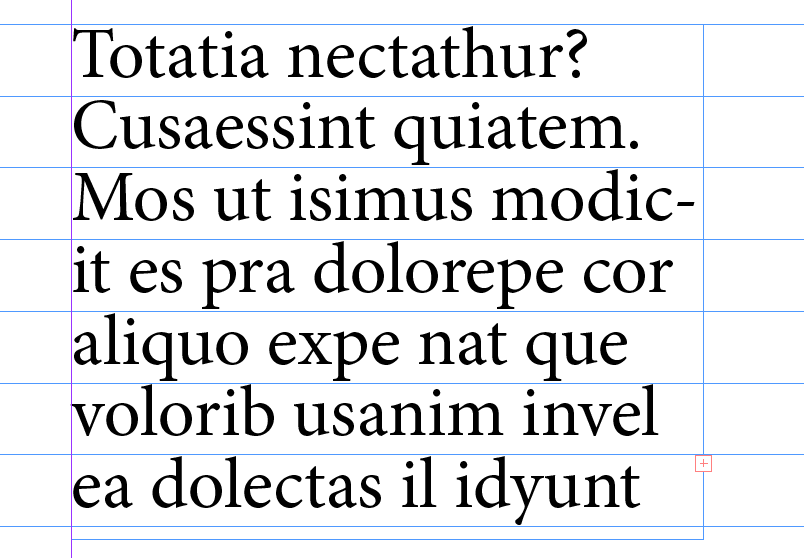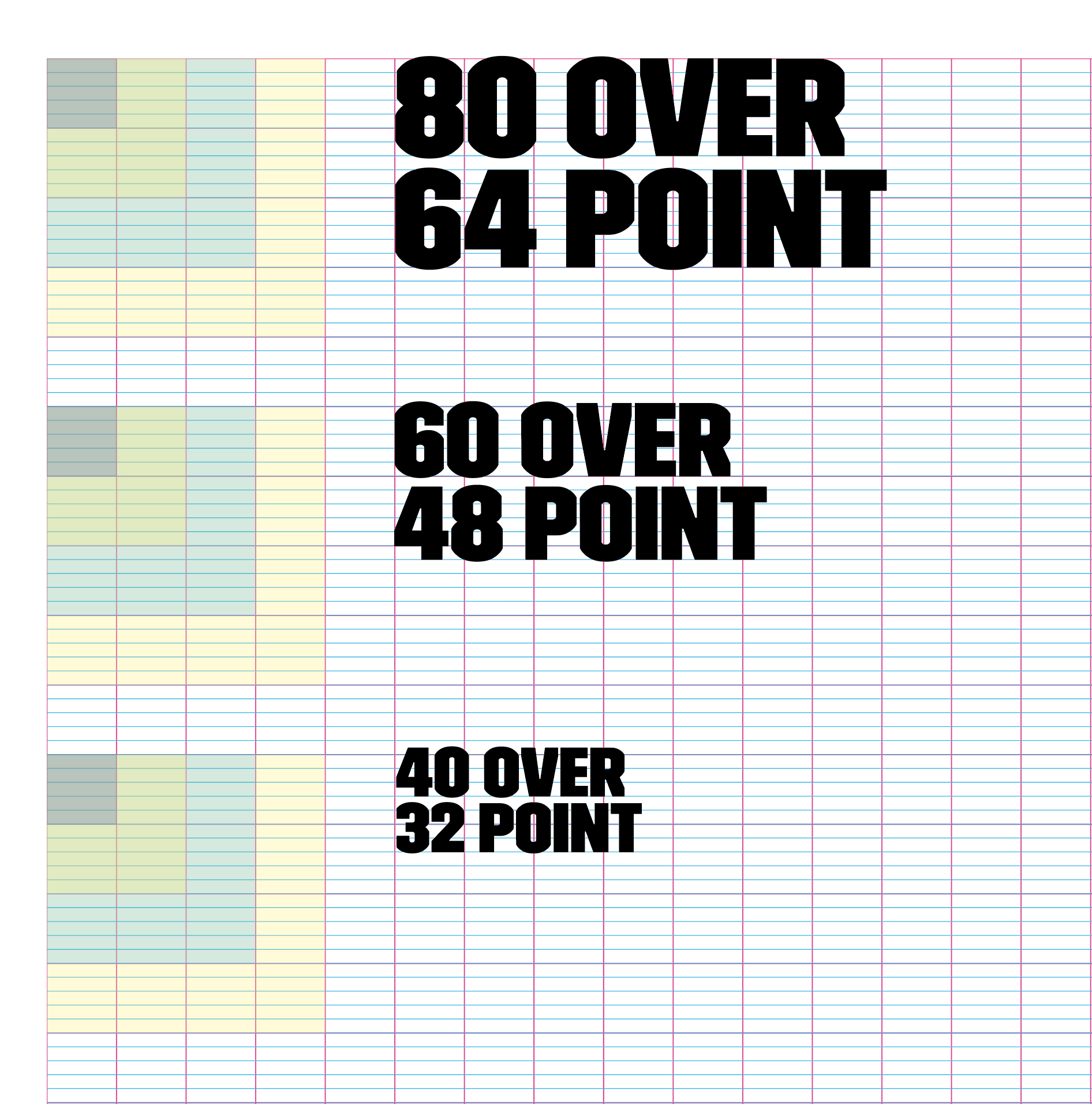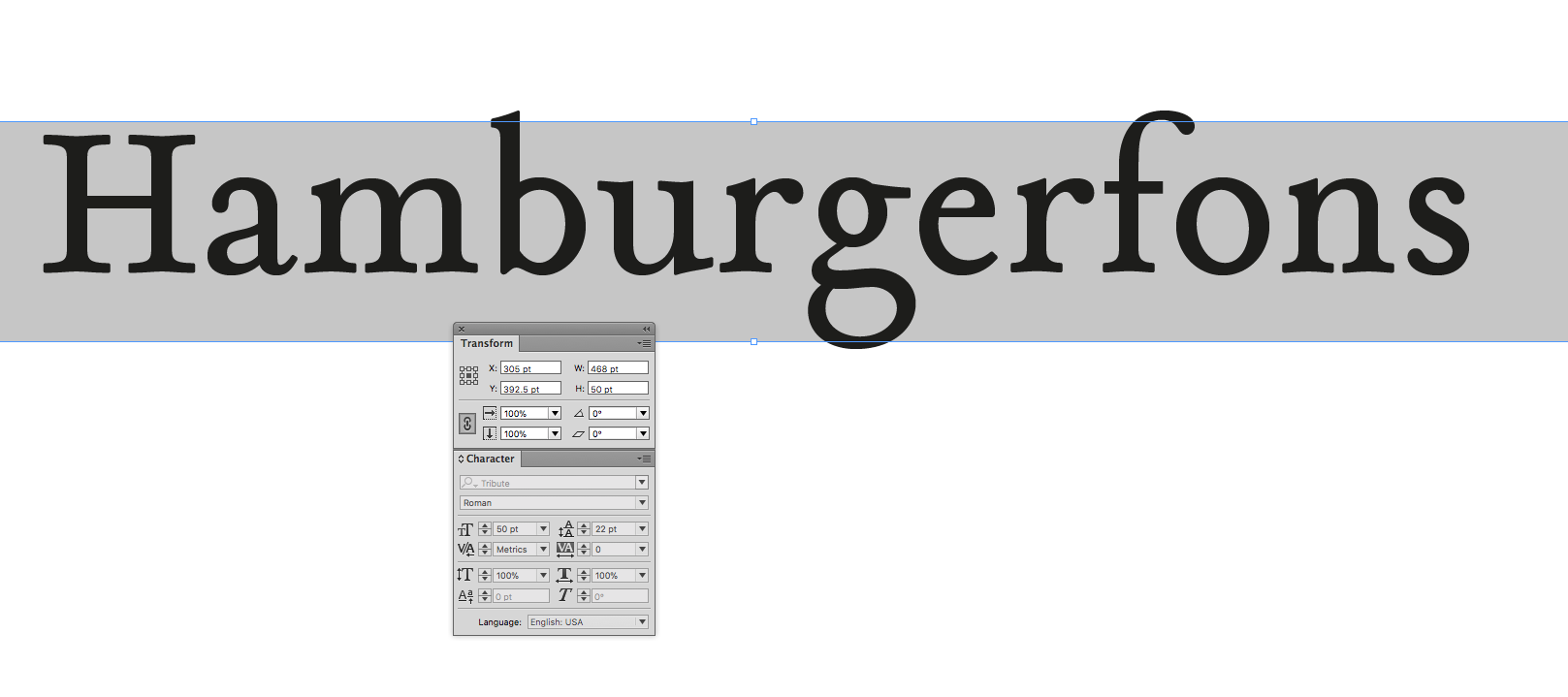- Home
- InDesign
- Discussions
- Re: Why is type point size not same as frame point...
- Re: Why is type point size not same as frame point...
Why is type point size not same as frame point size?
Copy link to clipboard
Copied
If I type something in a 32pt font, draw a box that is 32pt high and sit them next to each other, neither the cap height or X-height of the type matches the size of the box.
Why is this?

Copy link to clipboard
Copied
A font size is the measurement in points from the top of the Ascenders to the bottom of the Descenders (not the cap height – unless it's a lining cap only font nor is it of the x-height).
Copy link to clipboard
Copied
https://forums.adobe.com/people/Derek+Cross wrote
A font size is the measurement in points from the top of the Ascenders to the bottom of the Descenders (not the cap height – unless it's a lining cap only font nor is it of the x-height).
this is only true if the font has been designed that way. a font might have a taller cap height than ascenders, or it might be arbitrarily small in the em box, or it might have aspects that extend beyond it.
Copy link to clipboard
Copied
Usually, in some faces, the lower case ascenders are higher than the cap heights, but in either case how I defined a type size still applies.
It may be true, in certain swash and decorative fonts, but that's not typical and doesn't help the OP within the meaning of his original post.
Copy link to clipboard
Copied
https://forums.adobe.com/people/Derek+Cross wrote
..but in either case how I defined a type size still applies.
if that were true, every font would have the same relative distance between the ascender and descenders, which is demonstrably not true. i can set 36 pt type in three different fonts and get values for that distance of 33.15, 31.8, or 31 pt.
Copy link to clipboard
Copied
12pt type (for example) is on a 12pt body.
Here's a screenshot of a 14pt Font on 14pt body with a 14pt baseline grid:

Copy link to clipboard
Copied
the measurement from top of the ascender to bottom of the descender won't be exactly 14 points though. and if you used a different font, it'd be different again.
i've read others say what you said many times but never understood how it can be meaningfully called the definition of 'font size'.
Copy link to clipboard
Copied
The point size for type is something that was established many years ago before there were even computers (is that possible?). It was based on the metal "slug" that a piece of type was cast on and depending on how fragile the letters of a typeface the height of the slug was made taller or shorter to make sure that it would not break apart. Upon the adoption in the industry of computer type the established heights of typefaces was maintained. Thus you will also find a disparity between different typefaces that will not be the same height relative to one another despite being the same point size. You cannot use type height as an accurate measure of how tall the letters actually are.
Copy link to clipboard
Copied
"the height of the slug was made taller or shorter to make sure that it would not break apart"
I don't recognise that description.
Copy link to clipboard
Copied
I guess I’m just older than you, Derek. They were still using metal type when I was in college and we were taught all of this.
Copy link to clipboard
Copied
I'm aged 77, and undertook a six year apprenticeship as a compositor in Fleet Street, which included day release to college, where I was given additional tuition on hand-typesetting, plus using Linotype, Monotype and Ludlow machines plus Graphic Design.
Copy link to clipboard
Copied
I guess you win the age thing after all, Derek. I checked the wikipedia definition of all of this which is:
"In metal type, the point size of the font described the height of the metal body on which the typeface's characters were cast. In digital type, letters of a font are designed around an imaginary space called an em square. When a point size of a font is specified, the font is scaled so that its em square has a side length of that particular length in points. Although the letters of a font usually fit within the font's em square, there is not necessarily any size relationship between the two, so the point size does not necessarily correspond to any measurement of the size of the letters on the printed page."
While this does differ from what I had always heard in relation to digital type the bottom line is that the letter height does not correlate to the point size that is assigned to it.
Copy link to clipboard
Copied
You might like to consider what would happen if your wish were true: if the top of the box and the top of the letters were the same. Text Lines, if there was no extra space between them, would overlap each other. Nobody would want that. The measurement systems weren’t designed for the benefit of artists working to fill spaces with type.
Copy link to clipboard
Copied
I see, thanks for the help.
I'm trying to develop a modular print grid based on a baseline grid of 8pt.
Starting with a default type size of 80pt type over 64pt leading (multiples of 8) I was hoping to have a system where further type size options could decrease in multiples of 8 and the cap height and baseline of the type would always lock perfectly in between lines on the baseline grid (as it does with the default 80/64).
This would then enable the top and bottom of picture boxes that also used the baseline grid to lock perfectly next to the type.
Unfortunately though the cap height overshoots the top of the boxes (see image)
If I set the text frame baseline option to 'Cap Height' then the top of the type lines up with top of box (which is good) but not the baseline.
Would you therefore just align the top of the type with the box and let the bottom of the type drift off baseline ... or is there a better / more correct way of doing this?
I'd rather not force the type to fit between lines using odd point sizes as it needs to go into guidelines and the rules need to be fairly simple and robust.

Copy link to clipboard
Copied

Copy link to clipboard
Copied
These are the correct definitions, though what is the descent line is, in the UK anyway, called the Beard. What is misleading in the illustration, is the amount of space indicated above and below the ascender line and the descender line, it’s normally much less than this; see my earlier screenshot for what is usual. Any additional line spacing added would be the leading, named after the strips of lead that were added to the lines of metal type in the old letterpress days of printing.
Copy link to clipboard
Copied
What is misleading in the illustration, is the amount of space indicated above and below the ascender line and the descender line, it’s normally much less than this
I think the amount of space the shoulders take is up to the type designer and could vary from font to font, but there would always be some space. The same is true for the other dimensions, there's no set rule about what the ratio of the cap height or x height should be to the line height.
Copy link to clipboard
Copied
Indeed there isn't, my comments had nothing at all to do with either the x-height or the cap height. My remarks were about the font size and an understanding of this is important, particularly to book typographers.
Copy link to clipboard
Copied
I'm just pointing out that the line height or point size would rarely be the measurement from the descender line to the ascender line because most fonts include some shoulder space, which can be variable. Measuring that distance wouldn't usually give you the exact point size.
The gray box and the point size are both 50pts


Or an eccentric design like this:

Copy link to clipboard
Copied
Do you plan to use different fonts? They vary wildly in their relationship to their point size.
Copy link to clipboard
Copied
I will have a different font for body but its only this headline font (TRIM) I was hoping to have lock up with the image boxes top and bottom.
Body copy I'm happy for the bottom to drift off the boxes so long as it aligns across the Cap height.
Copy link to clipboard
Copied
Hi bpk101,
This was a good question so I did some research and found this article https://practicaltypography.com/point-size.html
It has a lot of useful information. I particularly like the "By The Way" area.
Copy link to clipboard
Copied
The way I see it is that this definition of font size made perfect sense when type was little blocks of metal. The type designer made decisions of esthetics and practicality, and made little metal letters which, when assembled into a block, "looked right". Some typefaces will want more "air around them" from an esthetic point of view, and according to their intended use. Other fonts were designed for having not a jot of wasted space, like classified ads, and so sacrificed everything for a tight fit. Cheap paperbacks would use tighter type than luxury hardcovers, and each would choose a type designed for this purpose.
Some digital designers will have understood and preserved this design ideal. Others won't have understood it, and probably just picked the proportions of some other font, of used the default of some app, right or wrong.
(Vaguely connected tangent: I was reading about the first printing of Shakespeare's plays, after his death. Academics with a LOT of time on their hands have analysed it to discover which bits were done with which boxes of type, and by which typesetters. Most interestingly, they have shown that printers did not own enough type to set a whole book. A section was typeset and printed. Then the pages were broken up, and the next part typeset and printed, until it was done. An order for a reprint meant repeating the whole process. Perhaps this is common knowledge but it surprised me: I always assumed that made up pages were kept).
Find more inspiration, events, and resources on the new Adobe Community
Explore Now


